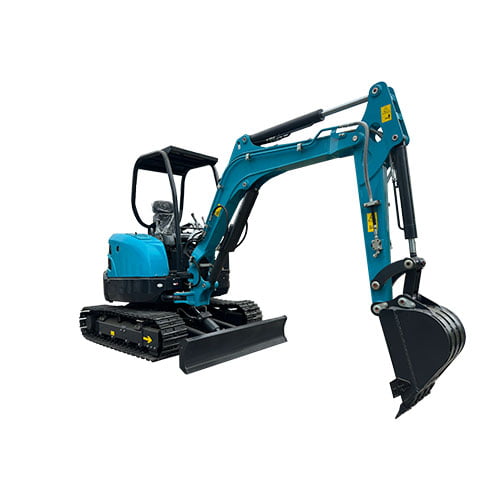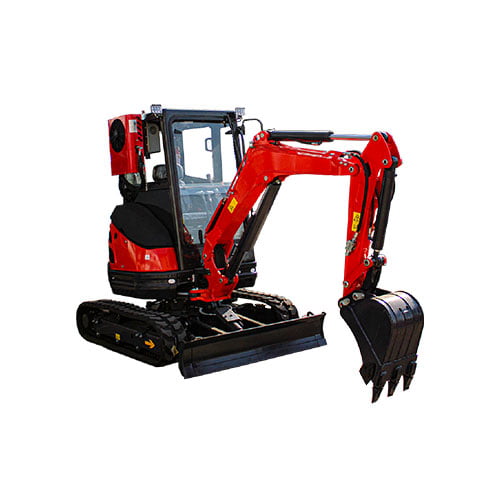Introduction
Mini excavators have become indispensable in the construction industry due to their versatility, compact size, and efficiency. Understanding the dimensions of mini excavators is crucial for selecting the right machine for your specific needs. This comprehensive guide will explore the key dimensions of mini excavators, their importance, and how to choose the right size for your projects. We will also include a detailed comparison table of popular mini excavators to help you make an informed decision.
Understanding Mini Excavator Dimensions

What Are Mini Excavator Dimensions?
Mini excavator dimensions refer to the various measurements that define the size and capabilities of the machine. These dimensions include overall length, width, height, operating weight, digging depth, reach, and more. Understanding these measurements is essential for determining the suitability of a mini excavator for specific tasks and job sites.
Key Dimensions of Mini Excavators
Overall Length: The total length of the excavator from the front of the bucket to the back of the machine.
Width: The width of the machine, including the tracks.
Height: The height from the ground to the top of the cab or canopy.
Operating Weight: The total weight of the excavator, including the standard bucket and full fuel tank.
Digging Depth: The maximum depth the bucket can reach below ground level.
Reach: The maximum distance the arm can extend horizontally.
Tail Swing Radius: The radius of the arc that the counterweight makes when the excavator rotates.
Importance of Mini Excavator Dimensions
Understanding mini excavator dimensions is crucial for several reasons:
- Job Site Suitability: Ensures the excavator can navigate and operate efficiently within the constraints of the job site.
- Transport and Storage: Determines the ease of transporting and storing the machine.
- Performance and Efficiency: Affects the machine’s digging capabilities, stability, and overall performance.
Comparing Mini Excavator Dimensions
To help you choose the right mini excavator, we have compared the dimensions of some popular models:
| Model | Operating Weight (lbs) | Digging Depth (ft) | Reach (ft) | Tail Swing Radius (ft) |
|---|---|---|---|---|
| QILU 2.5T QLN-W | 5,511 | 7.5 | 12.5 | 2.4 |
| Caterpillar 305E2 | 11,443 | 11.3 | 18.3 | 2.7 |
| John Deere 35G | 7,760 | 10.0 | 17.0 | 2.6 |
| Kubota U35-4 | 8,329 | 11.1 | 18.2 | 2.4 |
| Komatsu PC35MR-5 | 8,133 | 11.0 | 17.5 | 2.5 |
QILU 2.5T QLN-W
The QILU 2.5T QLN-W is a versatile mini excavator known for its compact size and robust performance. With an operating weight of 5,511 lbs and a digging depth of 7.5 ft, it is ideal for various construction and landscaping tasks.
Caterpillar 305E2
The Caterpillar 305E2 offers a higher operating weight of 11,443 lbs and a deeper digging depth of 11.3 ft, making it suitable for more demanding excavation projects. Its advanced hydraulic system provides excellent precision and control.
John Deere 35G
The John Deere 35G combines compact dimensions with impressive performance. It has an operating weight of 7,760 lbs and a reach of 17.0 ft, making it a reliable choice for residential and commercial projects.
Kubota U35-4
The Kubota U35-4 is designed for maneuverability and efficiency. With a digging depth of 11.1 ft and a tail swing radius of 2.4 ft, it can operate in tight spaces without compromising performance.
Komatsu PC35MR-5
The Komatsu PC35MR-5 features advanced technology and a strong hydraulic system. Its operating weight of 8,133 lbs and reach of 17.5 ft make it suitable for various excavation and utility projects.
How to Choose the Right Mini Excavator Dimensions

Assess Your Project Requirements
Before selecting a mini excavator, evaluate the specific requirements of your project. Consider factors such as the type of work, job site constraints, and the required digging depth and reach.
Evaluate Job Site Constraints
Analyze the physical constraints of your job site, including space limitations, accessibility, and ground conditions. Ensure that the chosen mini excavator can maneuver efficiently within these constraints.
Consider Transport and Storage
If you need to transport the mini excavator frequently, consider its overall dimensions and weight. Choose a model that can be easily transported and stored without requiring special equipment or permits.
Performance and Efficiency
Select a mini excavator that offers the right balance of performance and efficiency for your tasks. Consider factors such as digging force, hydraulic power, and cycle times to ensure optimal productivity.
Safety Features
Ensure that the mini excavator is equipped with essential safety features, such as ROPS (Rollover Protective Structure), FOPS (Falling Object Protective Structure), and advanced control systems.
Conclusion: Mini Excavator Dimensions
Understanding mini excavator dimensions is essential for selecting the right machine for your projects. By considering factors such as job site suitability, transport and storage requirements, and performance capabilities, you can choose a mini excavator that meets your needs and enhances your productivity. The comparison table provided in this guide offers a comprehensive overview of popular mini excavators, helping you make an informed decision.
FAQ
What are the key dimensions to consider when choosing a mini excavator?
When choosing a mini excavator, consider dimensions such as overall length, width, height, operating weight, digging depth, reach, and tail swing radius. These dimensions will help you determine the suitability of the machine for your specific tasks and job sites.
How does the tail swing radius affect the performance of a mini excavator?
The tail swing radius affects the machine’s ability to operate in confined spaces. A smaller tail swing radius allows the excavator to rotate without the counterweight extending beyond the tracks, reducing the risk of collisions and improving maneuverability in tight areas.
Why is operating weight important for a mini excavator?
Operating weight is important because it influences the stability, lifting capacity, and overall performance of the mini excavator. Heavier machines typically offer greater stability and lifting power, making them suitable for more demanding tasks.
Can I transport a mini excavator on a standard trailer?
Yes, many mini excavators can be transported on a standard trailer, depending on their dimensions and weight. Ensure that the trailer is rated to carry the weight of the excavator and that the machine’s dimensions fit within the trailer’s capacity.
What safety features should I look for in a mini excavator?
Look for safety features such as ROPS (Rollover Protective Structure), FOPS (Falling Object Protective Structure), advanced control systems, and operator visibility enhancements. These features help protect operators and improve overall safety on the job site.
How do I determine the right digging depth for my project?
Determine the right digging depth by assessing the specific requirements of your project. Consider factors such as the depth of foundations, utility installations, or landscaping features. Choose a mini excavator with a digging depth that meets or exceeds these requirements.
Are there any special maintenance requirements for mini excavators?
Mini excavators require regular maintenance to ensure optimal performance and longevity. Follow the manufacturer’s guidelines for routine inspections, fluid changes, lubrication, and component checks. Regular maintenance helps prevent breakdowns and extends the life of the machine.
Can mini excavators be used for demolition projects?
Yes, mini excavators can be used for light to moderate demolition projects. Their compact size and powerful hydraulic systems make them suitable for tasks such as breaking concrete, removing structures, and clearing debris.
What are the advantages of using a mini excavator over a full-sized excavator?
Mini excavators offer several advantages over full-sized excavators, including compact dimensions, maneuverability, and lower operating costs. They are ideal for projects in confined spaces, urban areas, and residential sites where larger machines may not be practical.
How can I improve the efficiency of my mini excavator?
Improve the efficiency of your mini excavator by selecting the right attachments, optimizing operator training, and performing regular maintenance. Using the appropriate attachments for specific tasks can enhance productivity, while skilled operators can maximize the machine’s capabilities.




